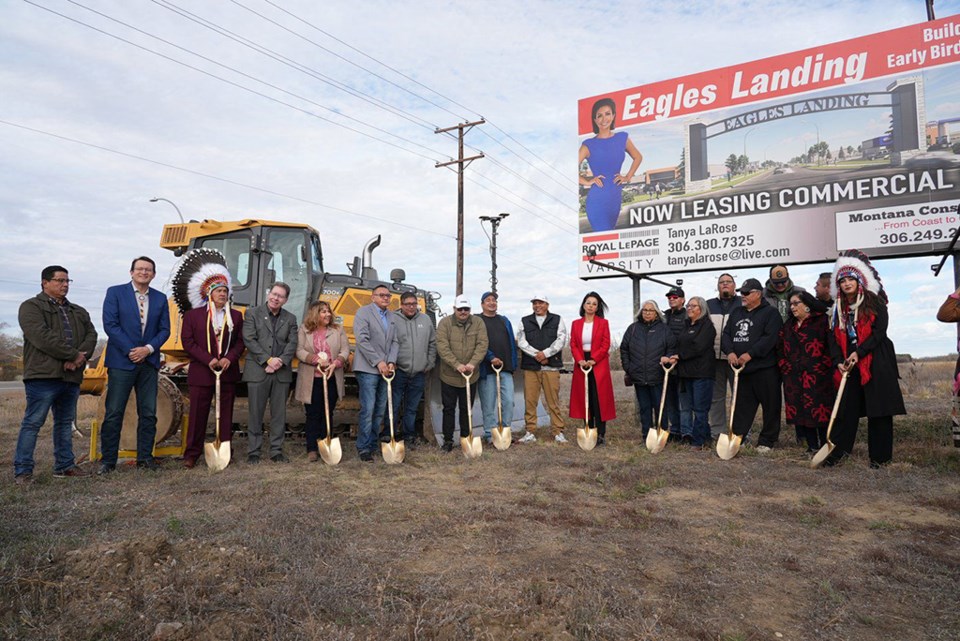NORTH BATTLEFORD — A Saskatchewan First Nation is about to make a new contribution to urban development in one of the province’s urban centres.
North Battleford mayor David Gillan and leaders from the Red Pheasant Cree Nation gathered on Wednesday to break ground on a 17-unit commercial retail project. Construction of a new mini-mall is expected to be complete next June, with the goal of expanding urban development in the North Battleford region while bringing the First Nations community into the larger fold of Saskatchewan’s life and economy.
“We need to be involved in the local economy, and when we’re hunkered down in our First Nations communities, there’s not a whole lot of opportunity for that,” said AJ Ahenakew, who leads economic development and finance for Red Pheasant Cree Nation.
While the band operates a store and farm on-reserve, the mini-mall is its second commercial entity in North Battleford. It has been operating a gas station and special goods store called Red Pheasant Centex Gas Bar in the city for about three years.
Gillan said the new initiative is a part of the group’s ongoing regional collaboration with the city.
“Urban reserves are an active and important part of our community, and we appreciate the optimism of our regional neighbours as they continue to invest strongly in North Battleford,” Gillan said in an email.
Upon completion, any vendor can apply to lease space in the commercial plaza from Red Pheasant. The funds go back into operating the facility and repaying bank loans for its construction.
Wednesday’s groundbreaking ceremony was the culmination of a larger strategic land purchasing initiative by Red Pheasant, using settlement funds from its Treaty Land Entitlement Agreement.
“You end up servicing your own community,” Ahenakew said. “Because of the population and demand you can only do so much, so having that urban (business) gives you a better opportunity to get people through the doors.”
The band settled on the reserve at Eagle Hills, about 33 kilometres south of North Battleford, in 1878 after signing Treaty 6 two years earlier. Today, it owns at least 14,000 acres of land in several communities around the province, including at least 78 acres in Saskatoon.
The initiative in North Battleford follows similar Indigenous economic developments across the country, including a multi-billion-dollar development on 500 hectares on Calgary’s western edge and an Indigenous business district project for Toronto’s downtown core.
Kimiya Shokoohi is the Local Journalism Initiative reporter for the Saskatoon StarPhoenix. The LJI program is federally funded by the Government of Canada.




